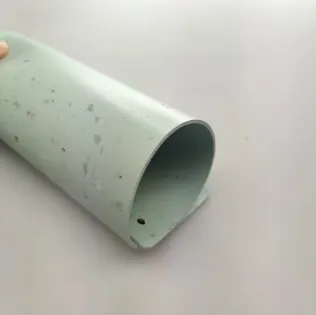
- Afrikaans
- Albanian
- Amharic
- Arabic
- Armenian
- Azerbaijani
- Basque
- Belarusian
- Bengali
- Bosnian
- Bulgarian
- Catalan
- Cebuano
- Corsican
- Croatian
- Czech
- Danish
- Dutch
- English
- Esperanto
- Estonian
- Finnish
- French
- Frisian
- Galician
- Georgian
- German
- Greek
- Gujarati
- Haitian Creole
- hausa
- hawaiian
- Hebrew
- Hindi
- Miao
- Hungarian
- Icelandic
- igbo
- Indonesian
- irish
- Italian
- Japanese
- Javanese
- Kannada
- kazakh
- Khmer
- Rwandese
- Korean
- Kurdish
- Kyrgyz
- Lao
- Latin
- Latvian
- Lithuanian
- Luxembourgish
- Macedonian
- Malgashi
- Malay
- Malayalam
- Maltese
- Maori
- Marathi
- Mongolian
- Myanmar
- Nepali
- Norwegian
- Norwegian
- Occitan
- Pashto
- Persian
- Polish
- Portuguese
- Punjabi
- Romanian
- Russian
- Samoan
- Scottish Gaelic
- Serbian
- Sesotho
- Shona
- Sindhi
- Sinhala
- Slovak
- Slovenian
- Somali
- Spanish
- Sundanese
- Swahili
- Swedish
- Tagalog
- Tajik
- Tamil
- Tatar
- Telugu
- Thai
- Turkish
- Turkmen
- Ukrainian
- Urdu
- Uighur
- Uzbek
- Vietnamese
- Welsh
- Bantu
- Yiddish
- Yoruba
- Zulu
ທ່າອ່ຽງຫຼ້າສຸດໃນພື້ນດ້ານການຄ້າ: ຄວາມຍືນຍົງແລະຄວາມທົນທານ
In today’s fast-evolving commercial space, businesses are increasingly focusing on flooring solutions that not only enhance the aesthetic appeal of their environments but also offer practical benefits like sustainability, durability, and low maintenance. As organizations prioritize environmentally responsible practices and long-term cost-effectiveness, the demand for flooring materials that meet these criteria has surged. Here’s a closer look at the latest trends in ພື້ນດ້ານການຄ້າ, ຊີ້ໃຫ້ເຫັນຄວາມຍືນຍົງແລະຄວາມທົນທານເປັນການພິຈາລະນາທີ່ສໍາຄັນສໍາລັບທຸລະກິດ.

ວັດສະດຸພື້ນເຮືອນແບບຍືນຍົງ: ຄວາມຕ້ອງການທີ່ເພີ່ມຂຶ້ນ ກ່ຽວກັບ ພື້ນດ້ານການຄ້າ
ເນື່ອງຈາກຄວາມຍືນຍົງກາຍເປັນຈຸດໃຈກາງໃນທົ່ວອຸດສາຫະກໍາຕ່າງໆ, ພື້ນຫ້ອງການການຄ້າ ທາງເລືອກຕ່າງໆໄດ້ເຫັນການປ່ຽນແປງທີ່ສຳຄັນໄປສູ່ການແກ້ໄຂທີ່ເປັນມິດກັບສິ່ງແວດລ້ອມ. ທຸລະກິດກໍາລັງເລືອກສໍາລັບວັດສະດຸທີ່ມາຈາກຄວາມຮັບຜິດຊອບ, ຫຼຸດຜ່ອນຮອຍຕີນກາຄາບອນ, ແລະສະເຫນີການນໍາມາໃຊ້ຄືນໃຫມ່ໃນຕອນທ້າຍຂອງວົງຈອນຊີວິດຂອງເຂົາເຈົ້າ.
One of the top choices in sustainable flooring is recycled content flooring. This includes options like recycled rubber flooring, which is made from discarded tires, and recycled vinyl flooring. These materials help reduce waste while providing a durable surface suitable for high-traffic areas. In addition to recycling old materials, many manufacturers are now using biodegradable and renewable resources such as bamboo, cork, and linoleum. These natural materials not only provide a sustainable flooring solution but also bring a unique aesthetic to commercial spaces, making them ideal for office buildings, retail stores, and hospitality environments.
The trend toward sustainability also extends to the use of low-VOC (volatile organic compound) products. Low-VOC flooring options, such as water-based finishes and non-toxic adhesives, have gained popularity due to their ability to improve indoor air quality and contribute to healthier work environments. For businesses that prioritize eco-friendly practices, these sustainable choices align well with their broader environmental goals.
ຄວາມທົນທານ: ບຸລິມະສິດຫຼັກສຳລັບເຂດທີ່ມີການຈະລາຈອນສູງ ກ່ຽວກັບ ພື້ນດ້ານການຄ້າ
ໃນການຕັ້ງຄ່າການຄ້າໃດໆ, ພື້ນ vct ການຄ້າ needs to stand up to heavy use, particularly in high-traffic areas such as offices, retail stores, hospitals, and schools. The latest trends in commercial flooring emphasize the importance of durability to withstand wear and tear while maintaining a professional appearance over time.
Luxury vinyl tiles (LVT) and vinyl composition tiles (VCT) have become go-to solutions for businesses in need of both durability and style. These products are engineered to resist scratches, stains, and scuffs, making them perfect for environments where floors are subjected to constant foot traffic. LVT, in particular, offers the added benefit of resembling hardwood or stone, offering the aesthetic appeal of premium materials without the high price tag or upkeep.
ອີກທາງເລືອກທີ່ທົນທານແມ່ນພື້ນຢາງ, ຖືກນໍາໃຊ້ຢ່າງກວ້າງຂວາງໃນຫ້ອງອອກກໍາລັງກາຍ, ສະຖານທີ່ດູແລສຸຂະພາບ, ແລະສະຖາບັນການສຶກສາ. ພື້ນຢາງພາລາໃຫ້ຄວາມຕ້ານທານທີ່ດີເລີດຕໍ່ກັບຜົນກະທົບ, ການຂັດ, ແລະຄວາມຊຸ່ມຊື່ນ. ນີ້ເຮັດໃຫ້ພວກເຂົາເຫມາະສົມກັບສະພາບແວດລ້ອມທີ່ອຸປະກອນຫນັກຫຼືເຄື່ອງຈັກຖືກນໍາໃຊ້, ເຊັ່ນດຽວກັນກັບພື້ນທີ່ທີ່ຕ້ອງການຄວາມຕ້ານທານກັບຄວາມຕ້ານທານກັບຄວາມຜິດພາດພຽງ. ນອກຈາກນັ້ນ, ພື້ນເຮືອນຢາງພາລາແມ່ນຂ້ອນຂ້າງງ່າຍຕໍ່ການຮັກສາ, ຕ້ອງການພຽງແຕ່ທໍາຄວາມສະອາດເປັນປົກກະຕິເພື່ອໃຫ້ມັນເບິ່ງໃຫມ່.
ພື້ນເຮືອນກະເບື້ອງ, ໂດຍສະເພາະ porcelain ແລະ ceramic, ຍັງສືບຕໍ່ເປັນຫຼັກສໍາລັບທຸລະກິດທີ່ຊອກຫາຄວາມທົນທານ. ເປັນທີ່ຮູ້ຈັກສໍາລັບທໍາມະຊາດທີ່ທົນທານຕໍ່ຄວາມທົນທານຕໍ່ນ້ໍາ, ຮອຍເປື້ອນ, ແລະຮອຍຂີດຂ່ວນ, ເຮັດໃຫ້ມັນເຫມາະສົມສໍາລັບສະຖານທີ່ເຊັ່ນ: ຮ້ານອາຫານ, ຮ້ານຂາຍຍ່ອຍ, ແລະແມ້ກະທັ້ງສະຖານທີ່ທາງການແພດ.
ການແກ້ໄຂພື້ນເຮືອນແບບປະສົມ: ປະສົມປະສານຄວາມຍືນຍົງແລະຄວາມທົນທານ ກ່ຽວກັບ ພື້ນດ້ານການຄ້າ
In recent years, hybrid flooring solutions have emerged as a popular choice, combining the best of both worlds: sustainability and durability. These floors integrate multiple materials to enhance performance while keeping environmental impact in check.
ຫນຶ່ງໃນການແກ້ໄຂດັ່ງກ່າວແມ່ນພື້ນເຮືອນທີ່ມີ cork, ເຊິ່ງປະສົມຄຸນສົມບັດທໍາມະຊາດຂອງ cork ກັບວັດສະດຸທີ່ມີຄວາມຍືນຍົງອື່ນໆເພື່ອສ້າງພື້ນຜິວທີ່ເຂັ້ມແຂງທີ່ທົນທານຕໍ່ການສວມໃສ່. Cork ແມ່ນສາມາດທົດແທນຄືນໄດ້ຕາມທໍາມະຊາດ, ນ້ໍາຫນັກເບົາ, ແລະສະຫນອງຄຸນສົມບັດຄວາມຮ້ອນແລະສຽງທີ່ດີເລີດ, ເຮັດໃຫ້ມັນເຫມາະສົມສໍາລັບຫ້ອງການແລະສະຖານທີ່ທີ່ຕ້ອງການການຫຼຸດຜ່ອນສຽງ.
ທ່າອ່ຽງປະສົມອື່ນແມ່ນພື້ນໄມ້ໄຜ່. ໄມ້ໄຜ່ແມ່ນຫນຶ່ງໃນພືດທີ່ເຕີບໂຕໄວທີ່ສຸດ, ເຮັດໃຫ້ມັນເປັນຊັບພະຍາກອນທົດແທນທີ່ດີເລີດສໍາລັບພື້ນເຮືອນ. ມັນຍັງມີຄວາມທົນທານສູງແລະມີຮູບລັກສະນະທີ່ທັນສະໄຫມ, ເຮັດວຽກໄດ້ດີໃນການອອກແບບຫ້ອງການທີ່ທັນສະໄຫມ. ພື້ນໄມ້ໄຜ່ບໍ່ພຽງແຕ່ມີຄວາມຍືນຍົງ, ແຕ່ຍັງມີຄວາມທົນທານທີ່ໂດດເດັ່ນ, ມັກຈະມີທາງເລືອກຂອງໄມ້ແຂງແບບດັ້ງເດີມ.
ການບໍາລຸງຮັກສາຕ່ໍາແລະປະຫຍັດຄ່າໃຊ້ຈ່າຍໃນໄລຍະຍາວ ກ່ຽວກັບ ພື້ນດ້ານການຄ້າ
A key factor driving the trend toward sustainable and durable flooring is the growing emphasis on low-maintenance solutions. For businesses, reducing maintenance time and costs is crucial, particularly for high-traffic environments. Flooring that requires minimal upkeep, such as polished concrete or epoxy flooring, continues to gain popularity. These materials are easy to clean and maintain, and they can last for decades when properly cared for.
Concrete flooring, especially when polished or treated with a protective sealant, provides a sleek and durable surface that can withstand significant wear. It is also resistant to stains, spills, and scratches, which makes it a long-term investment for commercial spaces. Moreover, concrete’s energy efficiency—thanks to its ability to absorb and retain heat—can reduce heating and cooling costs, adding to its long-term cost-effectiveness.
ນະວັດຕະກໍາປູພື້ນ: ວິທີແກ້ໄຂພື້ນເຮືອນອັດສະລິຍະ ກ່ຽວກັບ ພື້ນດ້ານການຄ້າ
Beyond traditional sustainable and durable materials, smart flooring solutions are making waves in the commercial sector. These innovative products combine advanced technology with high-performance materials to deliver both functionality and environmental benefits.
For example, smart flooring systems equipped with sensors can track foot traffic, detect wear patterns, and even adjust the temperature of the floor to improve energy efficiency. This technology allows businesses to monitor the condition of their floors, optimize maintenance schedules, and reduce long-term costs. Smart flooring is especially beneficial in commercial buildings, where optimizing energy use and maintaining floor integrity is crucial.
-
Masking Tape: Clean Removal, Precision Lines, Pro-GradeNov.10,2025
-
Skirting: MDF, Oak & SPC | Durable, Easy-FitNov.10,2025
-
Commercial VCT Tile Flooring – Durable, Low-MaintenanceNov.10,2025
-
LVT Vinyl Floors – Waterproof, Scratch‑Resistant, Easy ClickNov.10,2025
-
Masking Tape - Pro-Grade, Clean Removal, Crisp LinesNov.10,2025
-
Premium Masking Tape - Sharp Lines, Clean RemovalNov.10,2025



